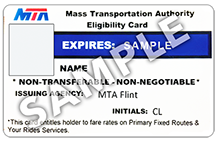A disability id card is an official document that identifies and verifies a person’s disability or medical condition, providing them with access to benefits and special support services. This article will explain the importance of having a disability ID card and how it can help to improve quality of life for those who are living with disabilities or medical conditions.

What Are The Benefits Of A Disability ID Card?
Having a disability ID card can provide holders with significant benefits, both financial and non-financial. Firstly, many businesses, organisations and public establishments offer discounts and concessions to those with an official disability or medical condition identification card. This could include discounted travel fares, reduced entrance fees to leisure and entertainment destinations, reduced admission costs for educational experiences and even lower grocery prices.
In addition, holders of a disability ID card may be eligible for government support programs such as rental assistance, supplemental income and other social services. Depending on the individual case, these may be available to those with a valid disability ID card. Finally, certain institutions may allow individuals with a disability ID card to access certain restricted facilities or areas that are not accessible to the public.
Applying For A Disability ID Card
The process of applying for a disability ID card will vary from country to country, but generally involves producing evidence of one’s disability or medical condition. This might include medical records, reports or other proof that is required by the issuing authority. In some countries, a doctor’s certificate or letter attesting to the nature of the condition may be necessary.
It is important to also provide evidence of one’s identity, usually in the form of a valid identification document such as a passport or national identity card. Once all of the documents have been submitted, most authorities will review the application and notify the applicant once it has either been approved or rejected.
Replacing a Lost or Stolen Disability ID Card
If a disability ID card has been lost or stolen, it is important to contact the relevant issuing authority immediately and request a replacement. It is likely that this process will be similar to the original application procedure; therefore, it is essential to keep all supporting documents in a safe place so they can be presented when necessary.
It is also worth noting that, depending on the issuing authority, there may be a fee to replace a lost or stolen disability ID card. However, it is important to bear in mind that it can be more difficult to access certain services without a valid disability ID card, so the cost may be well worth it.
Security Measures
In some circumstances, it may be possible for a third party to use another person’s disability ID card if it is not securely stored or kept safe. To ensure the security and validity of a disability ID card, it is essential to store it in a location where it cannot be accessed by any unauthorised persons. In addition, it is advisable to always carry a backup copy of the card in the form of an electronic file or photograph.
The holder of the card should also be aware of potential scams and never provide information related to their disability or medical condition to unverified sources. It is important to remember that only an official issuing body should ever require such information.
Conclusion
Having a disability ID card can be extremely useful for those with disabilities or medical conditions, allowing them to access a range of benefits and services. Furthermore, by taking appropriate security measures and managing the card responsibly, these benefits can be enjoyed for many years to come.




